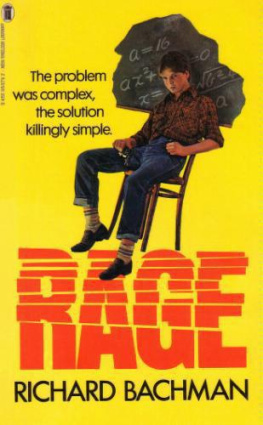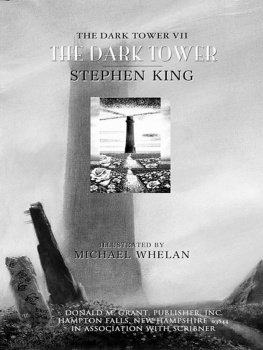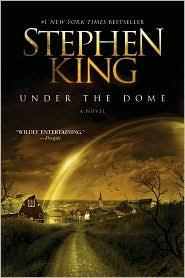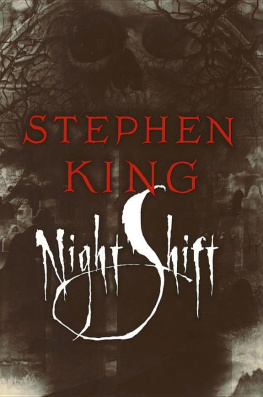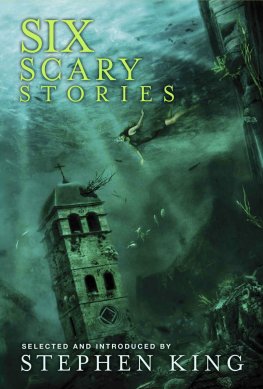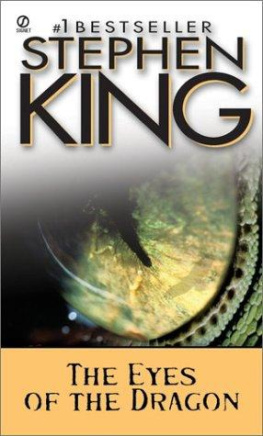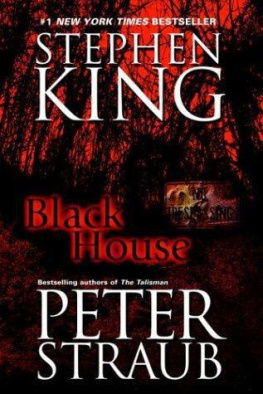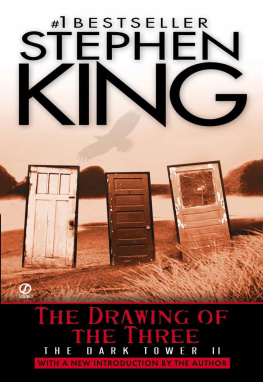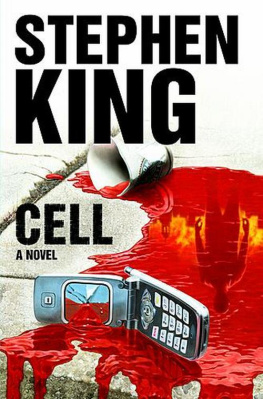Stephen King - Black House
Here you can read online Stephen King - Black House full text of the book (entire story) in english for free. Download pdf and epub, get meaning, cover and reviews about this ebook. year: 2001, publisher: Random House, genre: Detective and thriller. Description of the work, (preface) as well as reviews are available. Best literature library LitArk.com created for fans of good reading and offers a wide selection of genres:
Romance novel
Science fiction
Adventure
Detective
Science
History
Home and family
Prose
Art
Politics
Computer
Non-fiction
Religion
Business
Children
Humor
Choose a favorite category and find really read worthwhile books. Enjoy immersion in the world of imagination, feel the emotions of the characters or learn something new for yourself, make an fascinating discovery.

- Book:Black House
- Author:
- Publisher:Random House
- Genre:
- Year:2001
- Rating:3 / 5
- Favourites:Add to favourites
- Your mark:
- 60
- 1
- 2
- 3
- 4
- 5
Black House: summary, description and annotation
We offer to read an annotation, description, summary or preface (depends on what the author of the book "Black House" wrote himself). If you haven't found the necessary information about the book — write in the comments, we will try to find it.
Black House — read online for free the complete book (whole text) full work
Below is the text of the book, divided by pages. System saving the place of the last page read, allows you to conveniently read the book "Black House" online for free, without having to search again every time where you left off. Put a bookmark, and you can go to the page where you finished reading at any time.
Font size:
Interval:
Bookmark:
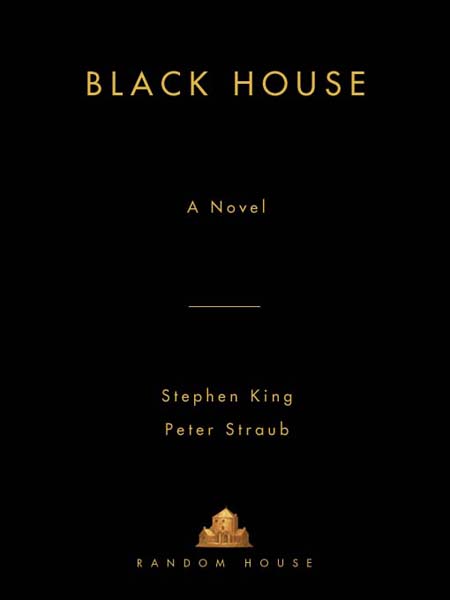
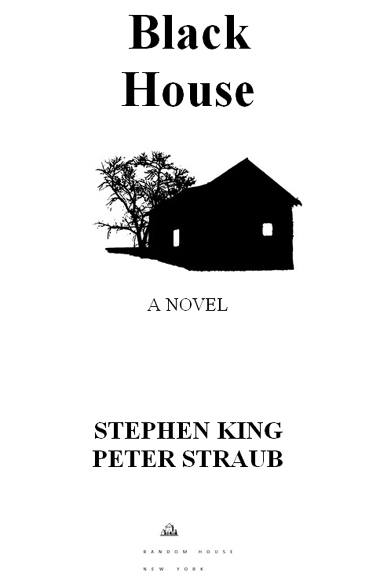
Contents
For David Gernert and Ralph Vicinanza
You take me to a place I never go,
You send me kisses made of gold,
Ill place a crown upon your curls,
All hail the Queen of the World!
The Jayhawks
Black
House
Right Here
and Now...
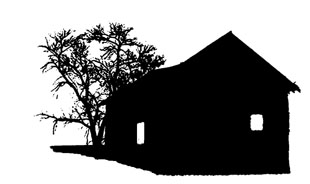
PART ONE
Welcome to
Coulee Country
RIGHT HERE AND NOW, as an old friend used to say, we are in the fluid present, where clear-sightedness never guarantees perfect vision. Here: about two hundred feet, the height of a gliding eagle, above Wisconsins far western edge, where the vagaries of the Mississippi River declare a natural border. Now: an early Friday morning in mid-July a few years into both a new century and a new millennium, their wayward courses so hidden that a blind man has a better chance of seeing what lies ahead than you or I. Right here and now, the hour is just past six A.M., and the sun stands low in the cloudless eastern sky, a fat, confident yellow-white ball advancing as ever for the first time toward the future and leaving in its wake the steadily accumulating past, which darkens as it recedes, making blind men of us all.
Below, the early sun touches the rivers wide, soft ripples with molten highlights. Sunlight glints from the tracks of the Burlington Northern Santa Fe Railroad running between the riverbank and the backs of the shabby two-story houses along County Road Oo, known as Nailhouse Row, the lowest point of the comfortable-looking little town extending uphill and eastward beneath us. At this moment in the Coulee Country, life seems to be holding its breath. The motionless air around us carries such remarkable purity and sweetness that you might imagine a man could smell a radish pulled out of the ground a mile away.
Moving toward the sun, we glide away from the river and over the shining tracks, the backyards and roofs of Nailhouse Row, then a line of Harley-Davidson motorcycles tilted on their kickstands. These unprepossessing little houses were built, early in the century recently vanished, for the metal pourers, mold makers, and crate men employed by the Pederson Nail factory. On the grounds that working stiffs would be unlikely to complain about the flaws in their subsidized accommodations, they were constructed as cheaply as possible. (Pederson Nail, which had suffered multiple hemorrhages during the fifties, finally bled to death in 1963.) The waiting Harleys suggest that the factory hands have been replaced by a motorcycle gang. The uniformly ferocious appearance of the Harleys owners, wild-haired, bushy-bearded, swag-bellied men sporting earrings, black leather jackets, and less than the full complement of teeth, would seem to support this assumption. Like most assumptions, this one embodies an uneasy half-truth.
The current residents of Nailhouse Row, whom suspicious locals dubbed the Thunder Five soon after they took over the houses along the river, cannot so easily be categorized. They have skilled jobs in the Kingsland Brewing Company, located just out of town to the south and one block east of the Mississippi. If we look to our right, we can see the worlds largest six-pack, storage tanks painted over with gigantic Kingsland Old-Time Lager labels. The men who live on Nailhouse Row met one another on the Urbana-Champaign campus of the University of Illinois, where all but one were undergraduates majoring in English or philosophy. (The exception was a resident in surgery at the UI-UC university hospital.) They get an ironic pleasure from being called the Thunder Five: the name strikes them as sweetly cartoonish. What they call themselves is the Hegelian Scum. These gentlemen form an interesting crew, and we will make their acquaintance later on. For now, we have time only to note the hand-painted posters taped to the fronts of several houses, two lamp poles, and a couple of abandoned buildings. The posters say: FISHERMAN, YOU BETTER PRAY TO YOUR STINKING GOD WE DONT CATCH YOU FIRST! REMEMBER AMY!
From Nailhouse Row, Chase Street runs steeply uphill between listing buildings with worn, unpainted facades the color of fog: the old Nelson Hotel, where a few impoverished residents lie sleeping, a blank-faced tavern, a tired shoe store displaying Red Wing workboots behind its filmy picture window, a few other dim buildings that bear no indication of their function and seem oddly dreamlike and vaporous. These structures have the air of failed resurrections, of having been rescued from the dark westward territory although they were still dead. In a way, that is precisely what happened to them. An ocher horizontal stripe, ten feet above the sidewalk on the facade of the Nelson Hotel and two feet from the rising ground on the opposed, ashen faces of the last two buildings, represents the high-water mark left behind by the flood of 1965, when the Mississippi rolled over its banks, drowned the railroad tracks and Nailhouse Row, and mounted nearly to the top of Chase Street.
Where Chase rises above the flood line and levels out, it widens and undergoes a transformation into the main street of French Landing, the town beneath us. The Agincourt Theater, the Taproom Bar & Grille, the First Farmer State Bank, the Samuel Stutz Photography Studio (which does a steady business in graduation photos, wedding pictures, and childrens portraits) and shops, not the ghostly relics of shops, line its blunt sidewalks: Bentons Rexall drugstore, Reliable Hardware, Saturday Night Video, Regal Clothing, Schmitts Allsorts Emporium, stores selling electronic equipment, magazines and greeting cards, toys, and athletic clothing featuring the logos of the Brewers, the Twins, the Packers, the Vikings, and the University of Wisconsin. After a few blocks, the name of the street changes to Lyall Road, and the buildings separate and shrink into one-story wooden structures fronted with signs advertising insurance offices and travel agencies; after that, the street becomes a highway that glides eastward past a 7-Eleven, the Reinhold T. Grauerhammer VFW Hall, a big farm-implement dealership known locally as Goltzs, and into a landscape of flat, unbroken fields. If we rise another hundred feet into the immaculate air and scan what lies beneath and ahead, we see kettle moraines, coulees, blunted hills furry with pines, loam-rich valleys invisible from ground level until you have come upon them, meandering rivers, miles-long patchwork fields, and little townsone of them, Centralia, no more than a scattering of buildings around the intersection of two narrow highways, 35 and 93.
Directly below us, French Landing looks as though it had been evacuated in the middle of the night. No one moves along the sidewalks or bends to insert a key into one of the locks of the shop fronts along Chase Street. The angled spaces before the shops are empty of the cars and pickup trucks that will begin to appear, first by ones and twos, then in a mannerly little stream, an hour or two later. No lights burn behind the windows in the commercial buildings or the unpretentious houses lining the surrounding streets. A block north of Chase on Sumner Street, four matching red-brick buildings of two stories each house, in west-east order, the French Landing Public Library; the offices of Patrick J. Skarda, M.D., the local general practitioner, and Bell & Holland, a two-man law firm now run by Garland Bell and Julius Holland, the sons of its founders; the Heartfield & Son Funeral Home, now owned by a vast, funereal empire centered in St. Louis; and the French Landing Post Office.
Next pageFont size:
Interval:
Bookmark:
Similar books «Black House»
Look at similar books to Black House. We have selected literature similar in name and meaning in the hope of providing readers with more options to find new, interesting, not yet read works.
Discussion, reviews of the book Black House and just readers' own opinions. Leave your comments, write what you think about the work, its meaning or the main characters. Specify what exactly you liked and what you didn't like, and why you think so.

